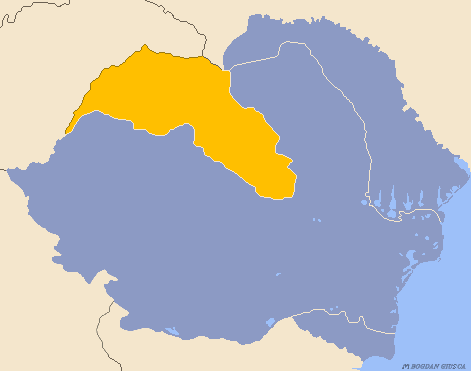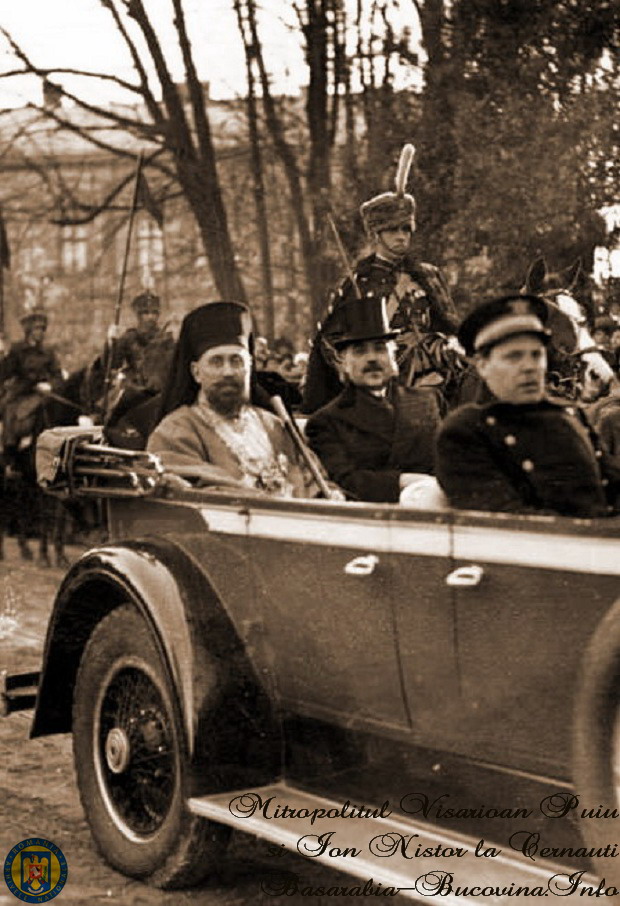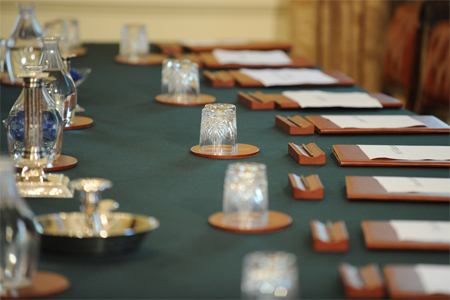|
Fourth Tătărăscu Cabinet
The fourth cabinet of Gheorghe Tătărăscu was the government of Romania from 17 November to 28 December 1937. Composition The ministers of the cabinet were as follows:Stelian Neagoe - "Istoria guvernelor României de la începuturi - 1859 până în zilele noastre - 1995" (Ed. Machiavelli, Bucharest, 1995) *President of the Council of Ministers: :*Gheorghe Tătărăscu (17 November - 28 December 1937) *Minister of the Interior: :*Richard Franasovici (17 November - 28 December 1937) *Minister of Foreign Affairs: :*Victor Antonescu (17 November - 28 December 1937) *Minister of Finance: :* Mircea Cancicov (17 November - 28 December 1937) *Minister of Justice: :* Vasile P. Sassu (17 November - 28 December 1937) *Minister of National Defence: :*Gen. Constantin Ilasievici (17 November - 28 December 1937) *Minister of Air and Marine: :*Radu Irimescu (17 November - 28 December 1937) *Minister of Agriculture and Property :*Gheorghe Ionescu-Sisești (17 November - 28 December 1937) *M ... [...More Info...] [...Related Items...] OR: [Wikipedia] [Google] [Baidu] |
Gheorghe Tătărescu
Gheorghe I. Tătărescu (also known as ''Guță Tătărescu'', with a slightly antiquated pet form of his given name; 2 November 1886 – 28 March 1957) was a Romanian politician who served twice as Prime Minister of Romania (1934–1937; 1939–1940), three times as Minister of Foreign Affairs (''interim'' in 1934 and 1938, appointed to the office in 1945-1947) and once as Minister of War (1934). Representing the "young liberals" faction inside the National Liberal Party (PNL), Tătărescu began his political career as a collaborator of Ion G. Duca, becoming noted for his anticommunism and, in time, for his conflicts with the PNL's leader Dinu Brătianu and the Foreign Minister Nicolae Titulescu. During his first time in office, he moved closer to King Carol II and led an ambivalent policy toward the fascist Iron Guard and ultimately becoming instrumental in establishing the authoritarian and corporatist regime around the National Renaissance Front. In 1940, he accepted the ... [...More Info...] [...Related Items...] OR: [Wikipedia] [Google] [Baidu] |
Ion Nistor
Ion I. Nistor (August 16, 1876 – November 11, 1962) was a Romanian historian and politician. He was a titular member of the Romanian Academy from 1915 and a professor at the universities of Cernăuți and Bucharest, while also serving as Minister of State for Bukovina, Minister of Public Works, Minister of Labor, and Minister of Religious Affairs and the Arts with a number of governments from 1918 to 1940. Biography Early life and education Nistor was born into a family of peasants in the Bivolărie hamlet of Vicovu de Sus, Bukovina; in Austria-Hungary at the time, it is now included in Suceava County, Romania. He studied at the local school in Vicovu de Sus, then in Rădăuți, first at the elementary school and then at the German High School, getting his ''Matura'' in 1897. He then studied Philosophy and Literature at the University of Czernowitz and between 1898 and 1900, he completed his military service in the Austro-Hungarian Army, serving in Polei and in Vienna. He ... [...More Info...] [...Related Items...] OR: [Wikipedia] [Google] [Baidu] |
Cabinets Disestablished In 1937
A cabinet in governing is a group of people with the constitutional or legal task to rule a country or state, or advise a head of state, usually from the executive branch. Their members are known as ministers and secretaries and they are often appointed by either heads of state or government. Cabinets are typically the body responsible for the day-to-day management of the government and response to sudden events, whereas the legislative and judicial branches work in a measured pace, in sessions according to lengthy procedures. The function of a cabinet varies: in some countries, it is a collegiate decision-making body with collective responsibility, while in others it may function either as a purely advisory body or an assisting institution to a decision-making head of state or head of government. In some countries, particularly those that use a parliamentary system (e.g., the United Kingdom), the cabinet collectively decides the government's direction, especially in reg ... [...More Info...] [...Related Items...] OR: [Wikipedia] [Google] [Baidu] |
Goga Cabinet
The cabinet of Octavian Goga was the government of Romania from 29 December 1937 to 10 February 1938. The Goga cabinet and the King When the National Liberal Party lost the elections in December 1937, King Carol II appointed Goga Prime Minister of Romania, although the National Christian Party had obtained only 9.15% of the votes for the house. Carol II expected the government to be transitional, allowing him to get rid of the party system. He wrote in his diary that he was conscious that the government would not last long and that, after its collapse, he would be able to free his country and himself from the tyranny and the petty interests of the parties. This calculation proved correct. However, the King miscalculated the impact of the Anti-Semitic measures of the Goga cabinet, which he had to deal with throughout his personal regime (the so-called royal dictatorship) that he established on 10 February 1938. The Goga cabinet stripped the Jews of their citizenship, limited ... [...More Info...] [...Related Items...] OR: [Wikipedia] [Google] [Baidu] |
Third Tătărăscu Cabinet
The third cabinet of Gheorghe Tătărăscu was the government of Romania from 29 August 1936 to 14 November 1937. Ministers The ministers of the cabinet were as follows: *President of the Council of Ministers: :*Gheorghe Tătărăscu (29 August 1936 - 14 November 1937) *Vice President of the Council of Ministers: :*Ion Inculeț (29 August 1936 - 14 November 1937) *Minister of the Interior: :*Dumitru Iuca (29 August 1936 - 23 February 1937) :*Gheorghe Tătărăscu (23 February - 14 November 1937) *Minister of Foreign Affairs: :*Victor Antonescu (29 August 1936 - 14 November 1937) *Minister of Finance: :*Mircea Cancicov (29 August 1936 - 14 November 1937) *Minister of Justice: :*Mircea Djuvara (29 August 1936 - 23 February 1937) :*Vasile P. Sassu (23 February - 14 November 1937) *Minister of National Defence: :*Gen. Paul Angelescu (29 August 1936 - 28 August 1937) :*(interim) Radu Irimescu (28 August - 4 September 1937) :*Gen. Constantin Ilasievici (4 September - 14 November 1937) * ... [...More Info...] [...Related Items...] OR: [Wikipedia] [Google] [Baidu] |
Cabinet Of Romania
The Government of Romania () forms one half of the executive branch of the government of Romania Romania is a country located at the crossroads of Central Europe, Central, Eastern Europe, Eastern and Southeast Europe. It borders Ukraine to the north and east, Hungary to the west, Serbia to the southwest, Bulgaria to the south, Moldova to ... (the other half being the office of the President of Romania). It is headed by the Prime Minister of Romania, and consists of the Ministry (government department), ministries, various subordinate institutions and agencies, and the 42 Prefect (Romania), prefectures. The seat of the Romanian Government is at Victoria Palace in Bucharest. The Government is the public authority of executive power that functions on the basis of the vote of confidence granted by Parliament, ensuring the achievement of the country's domestic and foreign policy and that exercises the general leadership of public administration. The Government is appointed by t ... [...More Info...] [...Related Items...] OR: [Wikipedia] [Google] [Baidu] |



